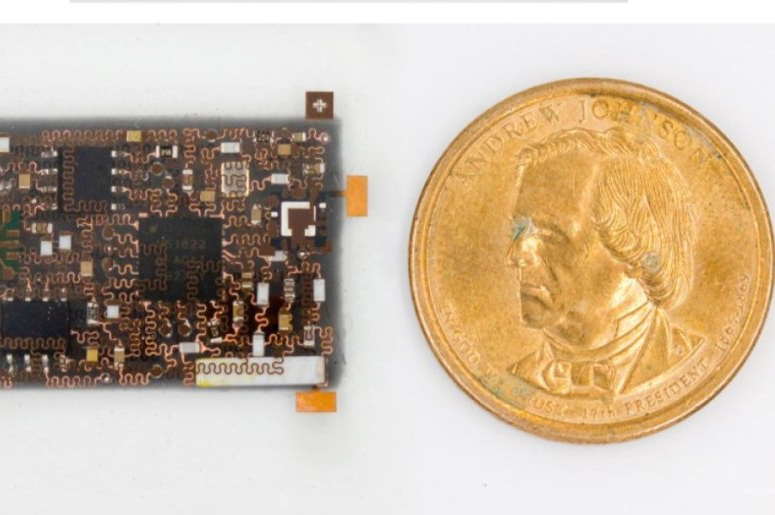NEWS
Stretchable Electronics Approach Used to Create "Smart Bandage"

Engineers have developed an approach to build 3D, stretchable electronics with the potential to perform multiple functions within a small, thin, pliable platform. An electronic patch, built as a proof of concept by a team led by the University of California San Diego, can be worn on the skin like a bandage, and used to wirelessly monitor a variety of physical and electrical signals depending on where it’s placed on the body - respiration, body motion, temperature, eye movement, heart and brain activity. It can also be used to wirelessly control a robotic arm. And, best of all, it’s the size and thickness of a U.S. dollar coin.
"Our vision is to make 3D stretchable electronics that are as multifunctional and high-performing as today's rigid electronics," said Sheng Xu, a professor in the Department of NanoEngineering and the Center for Wearable Sensors, both at the UC San Diego Jacobs School of Engineering. Xu served as senior author on a just-published paper describing the work.
"Rigid electronics can offer a lot of functionality on a small footprint -- they can easily be manufactured with as many as 50 layers of circuits that are all intricately connected, with a lot of chips and components packed densely inside,” Xu explained. “Our goal is to achieve that with stretchable electronics.”
True to form, the new device consists of four layers of interconnected, stretchable, flexible circuit boards. Each layer is built on a silicone elastomer substrate patterned with a small, rigid electronic part, such as a sensor, capacitor or any number of other possibilities. These “islands,” as the researchers call them, are connected by stretchable “bridges” made of thin, spring-shaped copper wires. The result is circuits that can stretch, bend and twist without compromising electronic function.
In order to get the circuits to work, Xu and his colleagues needed to overcome a technological roadblock: The multiple layers within rigid electronics are connected with small conductive holes known as vertical interconnect accesses (VIAs), which are traditionally made using lithography and etching. These are methods that won’t work for stretchable elastomers, so the team turned to lasers instead, mixing in a black organic dye that could absorb energy from a laser beam, hitting certain spots to create VIAs and filling in with conductive materials to make electrical connections.
The new proof-of-concept device has been dubbed a “smart bandage.” It can communicate wirelessly with a smartphone or laptop up to 10 m away; can last more than six months without any drop in performance or flexibility; and runs on a total of about 35.6 mW – equivalent to the power from seven laser pointers.



